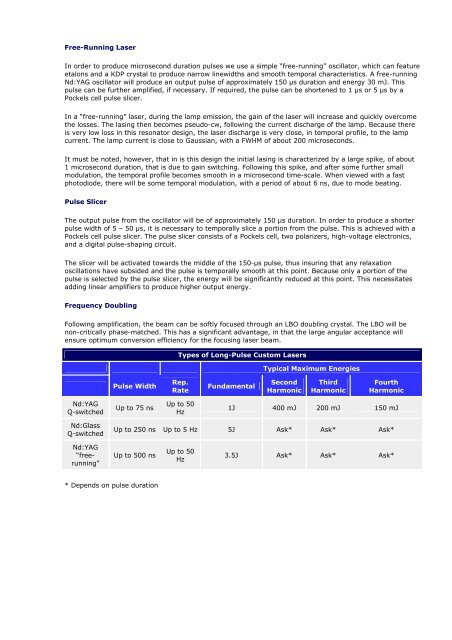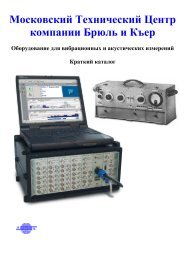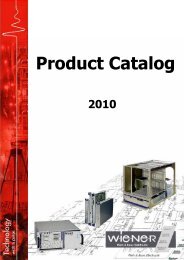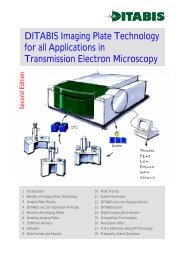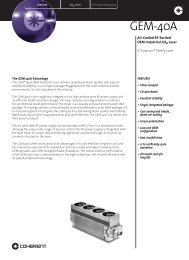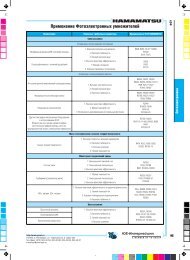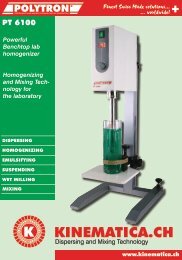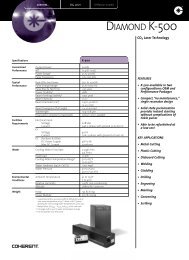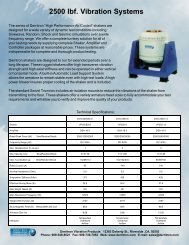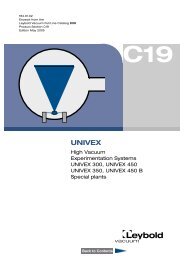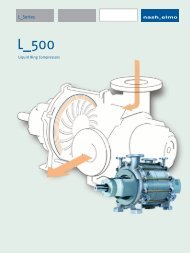Long Pulse.pdf
Long Pulse.pdf
Long Pulse.pdf
Create successful ePaper yourself
Turn your PDF publications into a flip-book with our unique Google optimized e-Paper software.
Free-Running Laser<br />
In order to produce microsecond duration pulses we use a simple “free-running” oscillator, which can feature<br />
etalons and a KDP crystal to produce narrow linewidths and smooth temporal characteristics. A free-running<br />
Nd:YAG oscillator will produce an output pulse of approximately 150 µs duration and energy 30 mJ. This<br />
pulse can be further amplified, if necessary. If required, the pulse can be shortened to 1 µs or 5 µs by a<br />
Pockels cell pulse slicer.<br />
In a “free-running” laser, during the lamp emission, the gain of the laser will increase and quickly overcome<br />
the losses. The lasing then becomes pseudo-cw, following the current discharge of the lamp. Because there<br />
is very low loss in this resonator design, the laser discharge is very close, in temporal profile, to the lamp<br />
current. The lamp current is close to Gaussian, with a FWHM of about 200 microseconds.<br />
It must be noted, however, that in is this design the initial lasing is characterized by a large spike, of about<br />
1 microsecond duration, that is due to gain switching. Following this spike, and after some further small<br />
modulation, the temporal profile becomes smooth in a microsecond time-scale. When viewed with a fast<br />
photodiode, there will be some temporal modulation, with a period of about 6 ns, due to mode beating.<br />
<strong>Pulse</strong> Slicer<br />
The output pulse from the oscillator will be of approximately 150 µs duration. In order to produce a shorter<br />
pulse width of 5 – 50 µs, it is necessary to temporally slice a portion from the pulse. This is achieved with a<br />
Pockels cell pulse slicer. The pulse slicer consists of a Pockels cell, two polarizers, high-voltage electronics,<br />
and a digital pulse-shaping circuit.<br />
The slicer will be activated towards the middle of the 150-µs pulse, thus insuring that any relaxation<br />
oscillations have subsided and the pulse is temporally smooth at this point. Because only a portion of the<br />
pulse is selected by the pulse slicer, the energy will be significantly reduced at this point. This necessitates<br />
adding linear amplifiers to produce higher output energy.<br />
Frequency Doubling<br />
Following amplification, the beam can be softly focused through an LBO doubling crystal. The LBO will be<br />
non-critically phase-matched. This has a significant advantage, in that the large angular acceptance will<br />
ensure optimum conversion efficiency for the focusing laser beam.<br />
Types of <strong>Long</strong>-<strong>Pulse</strong> Custom Lasers<br />
Typical Maximum Energies<br />
<strong>Pulse</strong> Width<br />
Rep.<br />
Rate<br />
Fundamental<br />
Second<br />
Harmonic<br />
Third<br />
Harmonic<br />
Fourth<br />
Harmonic<br />
Nd:YAG<br />
Q-switched<br />
Up to 75 ns<br />
Up to 50<br />
Hz<br />
1J 400 mJ 200 mJ 150 mJ<br />
Nd:Glass<br />
Q-switched<br />
Up to 250 ns Up to 5 Hz 5J Ask* Ask* Ask*<br />
Nd:YAG<br />
“freerunning”<br />
Up to 500 ns<br />
Up to 50<br />
Hz<br />
3.5J Ask* Ask* Ask*<br />
* Depends on pulse duration


